When a bearing wears out, it is usually a case of inadequate lubrication, faulty installation or improper adjustment. For the repair to be successful, you must first determine why the previous bearing failed. For sealed hub units, examining the internal bearings and races is impossible.
The most common failure pattern for bearings is for those on the passenger side of the vehicle to fail first. One reason is that the passenger-side bearings are exposed to the most standing water in the gutter.
Metallurgy
Most bearing components are heat-treated to harden the metal. But, the heat-treating can penetrate only so far into the metal. Once the bearing has worn through this layer, rapid and catastrophic wear occurs to the softer metal below. This type of fatigue failure is called “spalling.” This damage causes the metal to come off in flakes (see Figures 1, 2 and 3).
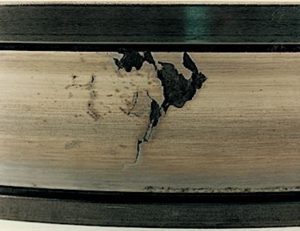
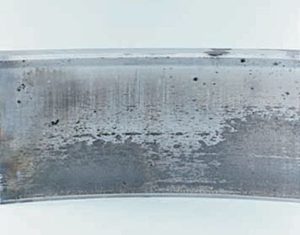
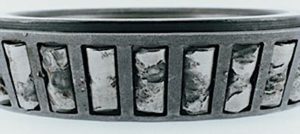
If a bearing overheats, the hot lubricant breaks down and can cause scoring and even etching of the bearing surfaces. Water and other corrosive elements can also create this condition, which leads to spalling down the road (see Figure 4). Burned or oxidized lubricant may leave a dark coating on bearing surfaces (see Figure 5). Remember that with tapered roller bearings, excessive preload can mimic this same damage. If a bearing gets really hot, its cages and seals could be deformed and lead to bearing lock-up (see Figures 6 and 7).
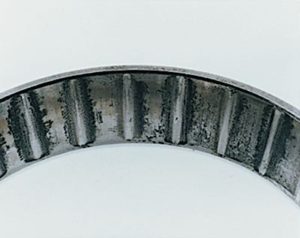
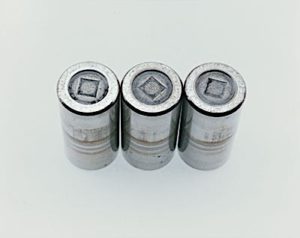
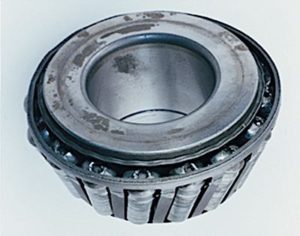
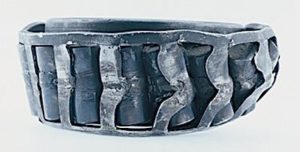
Seals are critical components for the longevity of a bearing. If contaminants from the outside find their way inside, this could cause a wear pattern called bruising (see Figure 8). So, never reuse seals. Used seals can leak and contaminate brake linings or cause premature bearing failure.
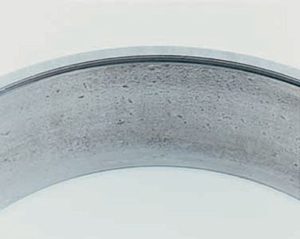
Bearings are precision products that require complex manufacturing processes. Inferior bearings that use low-quality steel and have poor heat-treating can wear and spall prematurely. Also, the poor-quality steel may have inclusions of hard or soft metal that can cause a premature failure (see Figure 9).
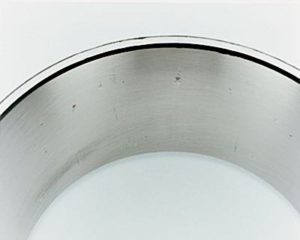
Installation
Installing wheel bearings is a relatively straightforward job. But, there are several key items to remember when dealing with serviceable or sealed hub units.
On serviceable bearings, the most important service tip is to invest in a good set of seal drivers. Even a slight distortion in a seal made during installation can shorten the life of the bearing inside. Also, do not skimp on the quality of the grease.
Unit hub assemblies combine the bearings, seals, hub and spindle in one pre-assembled unit that simply bolts to the suspension. These are “maintenance free” and non-serviceable units that are preset, pregreased and presealed.
OEMs and bearing manufacturers always recommend using a torque wrench for installation. During removal, an impact wrench can damage the axle nut threads and shock the CV joints.
Adjusting
Overtightening adjustable tapered roller bearings is a common error that can lead to premature failure. Tapered roller bearings on the front of RWD vehicles are never preloaded. They’re snugged up with no more than 15 to 20 ft.-lbs. of torque while rotating the wheel to make sure the bearings are seated. Then, the adjustment nut is loosened 1/6 to 1/4 turn and locked in place with a new cotter pin.
As a rule, endplay should be about 0.001 to 0.005 inches. There should be no play on most FWD cars, but up to 0.010 inch of play in the front bearings may be acceptable on RWD vehicles.
On FWD cars with adjustable tapered roller rear-wheel bearings, the bearing adjustment procedure is usually the same as with RWD vehicles (zero preload), but some do require a slight preload.

 Industry News
Industry News







